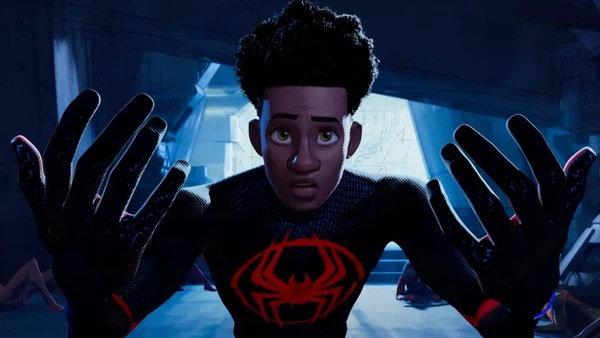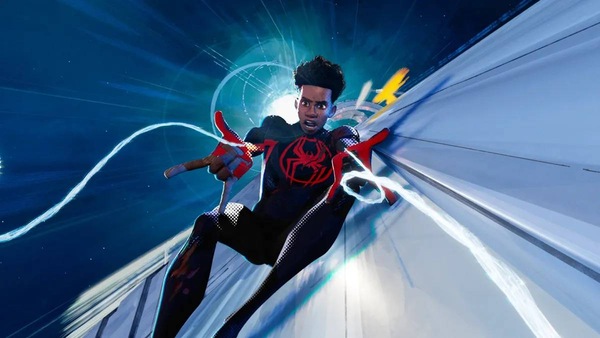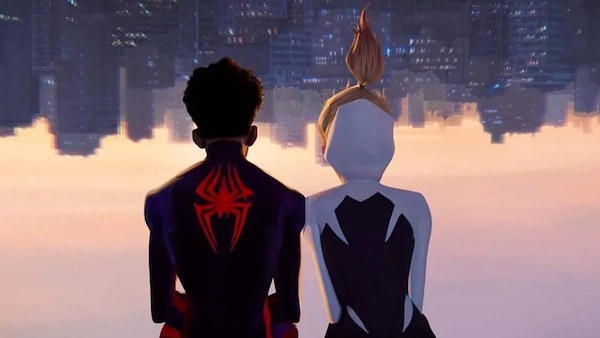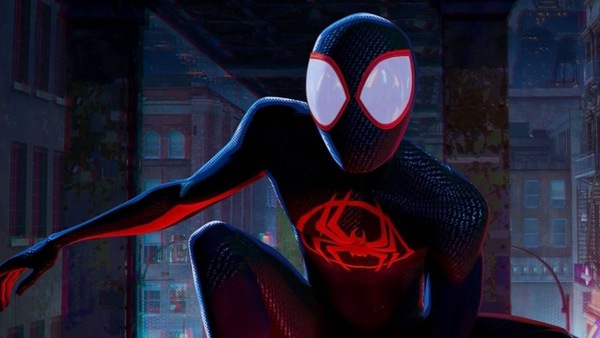Spider-Man: Across the Spider-Verse Goes Where No Marvel Feature Has Before
This is #CineFile, where our critic Rahul Desai goes beyond the obvious takes, to dissect movies and shows that are in the news. Today — Spider-Man: Across The Spider-Verse.

Last Updated: 02.59 AM, Jun 03, 2023
UNTIL very recently, the term “multiverse” gave me sleepless nights. The MCU flicks had turned this endlessly fertile sci-fi device into a flimsy excuse to expand every superhero franchise sideways. (You know what they say: Lateral motion is just vertical movement cursed by gravity). Not too long ago, the mention of a multiverse — the slightest hint of parallel universes and timelines — felt like the promised land. Remember that glorious little indie, Another Earth? Remember that last shot? I longed for those good old days, back when science fiction didn’t feel like the lovechild of popcorn entertainment. Then came the artful Spider-Man: Into the Spider-Verse and the audacious Everything Everywhere All At Once. At long last, these were stories that looked at the multiverse as something more novel, more ambitious, more intimate and more symbolic of life itself.
The Spider-Verse is no Marvel nostalgia gimmick — it is a metaphor for the long-standing relationship between comic-book storytelling and the fans who interpret their heroes in the texture of where they come from. Every world has a Spider-Man of a different heritage, race, religion, gender, form and age not for the sake of diversity, but as a myth-busting nod to the fact that superheroes are only as lonely as the minds that imagine them. Into the Spider-Verse reinvented the language of animation — as a trippy, adult medium of hand-drawn fury — by merging the visual grammar of dreams with the emotional grammar of alternate reality. It’s a wonderful assault on the senses, and not without reason. Frames flit between panels and colour-shifting paintings, leaky graphic art and messy crayon-crawls, at times almost replicating the illusion of food stains and oily creases on the comic pages we grew up reading during our meals. It’s a universe, but also a verse of eye-popping poetry designed to remind us that belonging and acceptance are the cornerstones of every teenager’s journey.

Spider-Man: Across the Spider-Verse goes where very few animated adventures have gone before. It’s a sublime and surprisingly mature sequel in the way it confronts more pressing questions about the fatigue of modern superhero content. (That is really what the multiverse represents, doesn’t it? A crowded landscape where all of them seem to be linked to each other by commercial identity alone. Now imagine them wondering how to be more than just the brainchild of comic-book writers across eras). In a way, this is the first film that addresses the creative bankruptcy of the Marvel-remake revolution — or the global trend of rebooting the same superheroes across comic-book volumes, decades and movie franchises.
It argues that simply featuring an African-American Spider-Man, an Indian Spider-Man, a Spider-Punk or a Spider-Woman is not a marker of originality. Representation is only the beginning; agency is the destination. It’s the newness of the narrative that ultimately matters. The film’s defiant design suggests that force-fitting heroes from disparate cultures with similar legacy-tropes of Spider-Man is the difference between reverence and irreverence. Despite the several iterations over the years, not enough of them have taken real risks, too afraid to mess with tradition and fanbases. This franchise does that, ironically by critiquing the safety-first approach of every ‘subversive’ superhero adaptation in the last two decades. It tinkers with the very fundamentals of Spider-Man — his upbringing, personality, feelings, status, goals — and hence dares to evolve upwards instead of sideways.

Early in the film, Miles Morales, the spirited teenager who’s taken up the mantle of being Spider-Man on Earth-1610 (his world), is late to his evaluation at school. The teacher speaks to his parents in a concerned tone, and wonders what Miles’ “story” is. She is worried that, despite being a good student, his profile might not be interesting enough for colleges to consider him. She asks if she can dramatise it a bit on paper — an immigrant mother, a tough childhood or something. But the parents wryly refuse. Miles’ mother Rio reminds the teacher that Puerto Rico is very much a part of America; father Jefferson mentions that they own a whole floor in a Brooklyn building and he’s about to be promoted to captain of the police force. They are a family of privilege. In other words, the teacher is implying that there’s not enough struggle and grief in Miles’ life for him to be a Spider-Man. His parents are alive and well, he isn’t a poor or geeky loner, and he’s on his way to a great college. His only problem is that he hasn’t come clean about his undercover identity to his parents, which causes friction with his well-meaning father. His mother believes in him; nobody is in mortal danger; his Spider-Man is slowly winning the hearts of New York City.
The specifics of the plot further this theme. Miles follows Gwen Stacy — the troubled Spider-Woman of her own universe — to become the newest member of the ‘Spider-Society,’ a secret space for all the best Spider-Men across timelines. The leader of the society, Miguel O’Hara, who is a ninja-vampire Spidey from 2099, is reluctant to involve young Miles. There’s a villain called Spot, an ex-scientist who has the power to create his own portals and potentially destroy the multiverse. But Miguel believes that Miles is the real liability, because Miles is the only Spider-Man who is a threat to the “canon”. The canon is a sequence of key sacrifices in every Spider-life — like the death of Uncle Ben in the first live-action film, the death of Gwen’s father in The Amazing Spider-Man franchise, or even the death of Peter Parker in Gwen’s current world — that ensures the stability of the multiverse and the correct origins of a new Spider-Man. Everyone must suffer to wear that suit. Any disruption, or deviation, from these events could rupture the fabric of the multiverse and destroy them all.

Which is to say that Miles — and, by extension, Spider-Man: Across the Spider-Verse — is the rebel in terms of template storytelling. Even in the context of this film, Miles is an anomaly who wasn’t supposed to be bitten by a radioactive spider from another dimension; his identity wasn’t “written,” and so he is an outsider with a drastically different — and normal — approach towards heroism. He wants to be more than just the conventional tragedy trope. Miles battles with Miguel for the right to be his own story and do his own thing. He realises that his own father’s death at the hands of Spot is a canon event, too, and so sets out to prevent it. He’s not only rescuing his family then; he’s also rescuing superhero storytelling from tired permutations and combinations of itself. Miles wants to change the script and be original; bad things don’t have to happen for him to be Spider-Man.
Miguel and the other Spider-Men chase him, but we root for Miles because we sense the stakes. Miles must reclaim his agency and puncture the stubborn ways of the Spider-Verse so that others can be bold enough to end this loyal-to-source fatigue — and perhaps one day, dream of newer and fresher superhero journeys. Miles’ meta mission is a masterstroke by the writers, one that is expected to culminate in the final film (Spider-Man: Beyond the Spider-Verse) of this animated trilogy. All he has to do is save his dad and break the chain of Spider-Man lore. All he has to do is prove that a modern Spider-Man can come from anywhere. Where he goes — on his own terms; unshackled from the canons of the past; liberated from his image as MCU cannon fodder — is all that matters. If he succeeds, maybe one day there won’t be any Spider-Man. Maybe a new superhero will finally be created; no old ones will be recycled. If that isn’t the point of a multiverse, I don’t know what is.
